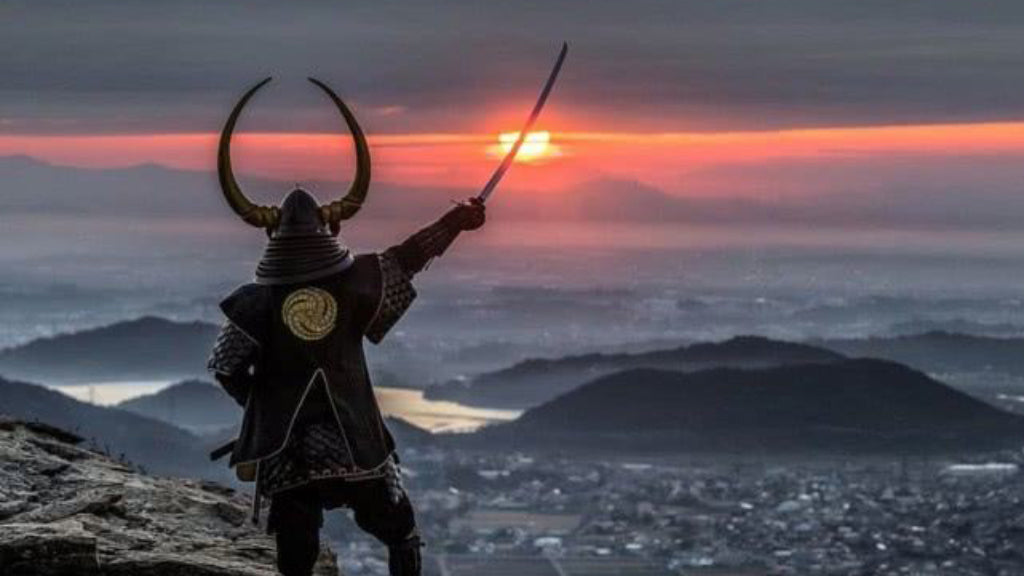Samurai Soul, Samurai Swords!

There is probably no other weapon in the world that is seen as possessing its own soul. In ordinary Japanese homes, if there is a samurai swords handed down from the ancestors, it must be placed in the most conspicuous position in the home to recall the martial and majestic appearance of the ancestors. Since ancient times, the smelting of weapons is the work that gathers long working hours of human beings. It takes a lot of labor to make a weapon that pursues the ultimate sharpness and artistic beauty. Samurai swords, Damascus swords, and Malayalam swords are also known as the three famous swords in the world. Among them, samurai swords have the highest status and the highest reputation in the weapons and art world.
On the one hand, it is due to its lethal power of cutting gold and breaking jade, and on the other hand, it is due to its unique craftsmanship that has won the charm of oriental aesthetics. "Slaughtering swords + artistic beauty", the combination of the two attributes makes samurai swords very popular among collectors. This can also be seen from the market price.

1. The accessories and exterior of samurai swords also have an independent appreciation system
Even in movies such as Kill Bill, Shadow Dancer, and Wolverine: Warriors, the cool samurai swords props used to shoot are valuable. Behind the beautiful shapes, smooth arcs, and delicate water patterns are the long-term work and cooperation of knife makers in different links. The metallurgist was sweating profusely, blasting the furnace again and again. The knife maker was attentive, hammering the blade material one by one. The polisher was as still as a mountain, grinding the blade again and again. The samurai was engrossed, waving the sword one by one. Both the maker of the knife and the user of the knife are full of affection for the weapon. It is precisely because of this that samurai swords are regarded as weapons that carry the soul.
From the Kofun period in Japan (mid 3rd century to 7th century), the development of Japanese wrought iron technology and weapons began to accelerate, and the foundation of various weapons was laid during this period, including swords, spears, bows and arrows, armor, shields Wait. The Japanese weapons of this period, with a style that came from China and the Korean peninsula, were different from the previous weapons with native Japanese characteristics.
In addition to their powerful functions as weapons, the swords of the Kofun era also played an important role in symbolic ceremonies, according to scholars. At that time, the extravagant and gorgeous sword attire was considered a symbol of ruling power. Such knives can be used for religious activities such as sacrifices, or worn only by those in power who command battles. At this time, the sword is straight, and can only be used for stabbing, not slashing like a machete. For example, the gold and bronze ring-headed broadsword at the end of the Kofun Period, the Bingzi Jiaolin Sword and the Seven Star Sword from the Asuka Period, and the straight katana sword from the Nara Period kept in Shoso-in. They are all representatives of such straight katana sword handed down products. In the middle of the Heian period, ancient swords from China and Korea flowed into Japan, and a large number of imitation ancient swords began to appear in Japan, mostly with straight blades. At this time, the straight katana sword was the mainstream of the weapon industry.
2. The biggest feature of samurai swords is the curvature of the blade
The streamlined and curved blade is a natural bending caused by the changes caused by the matching of steel and quenching. And this point of change is the end of the Heian period when the samurai power rose. At the end of the Heian period, the rise of the samurai family, the expansion of the power of the samurai class, and the frequent wars, accompanied by changes in weapons. In order to adapt to the way of warfare at that time, the shape and performance of the knife have changed. The straightness and cross-sectional shape of the blade have changed, and the straight katana sword has begun to change to a machete. The exact time point of this change cannot be determined, but it has undoubtedly gone through a long time. In some swords that have been preserved, traces of the transition from straight katana sword to machete can also be seen.
As the samurai class officially came to power and the Kamakura period began, the forging of samurai swords also ushered in a full-scale prosperity. Moreover, with the continuous refinement of the functions of knives, more categories have emerged, such as tachi, dachi, wakizashi, tanto (short knife), etc. According to statistics, there are clear historical records of the types of Japanese swords.
